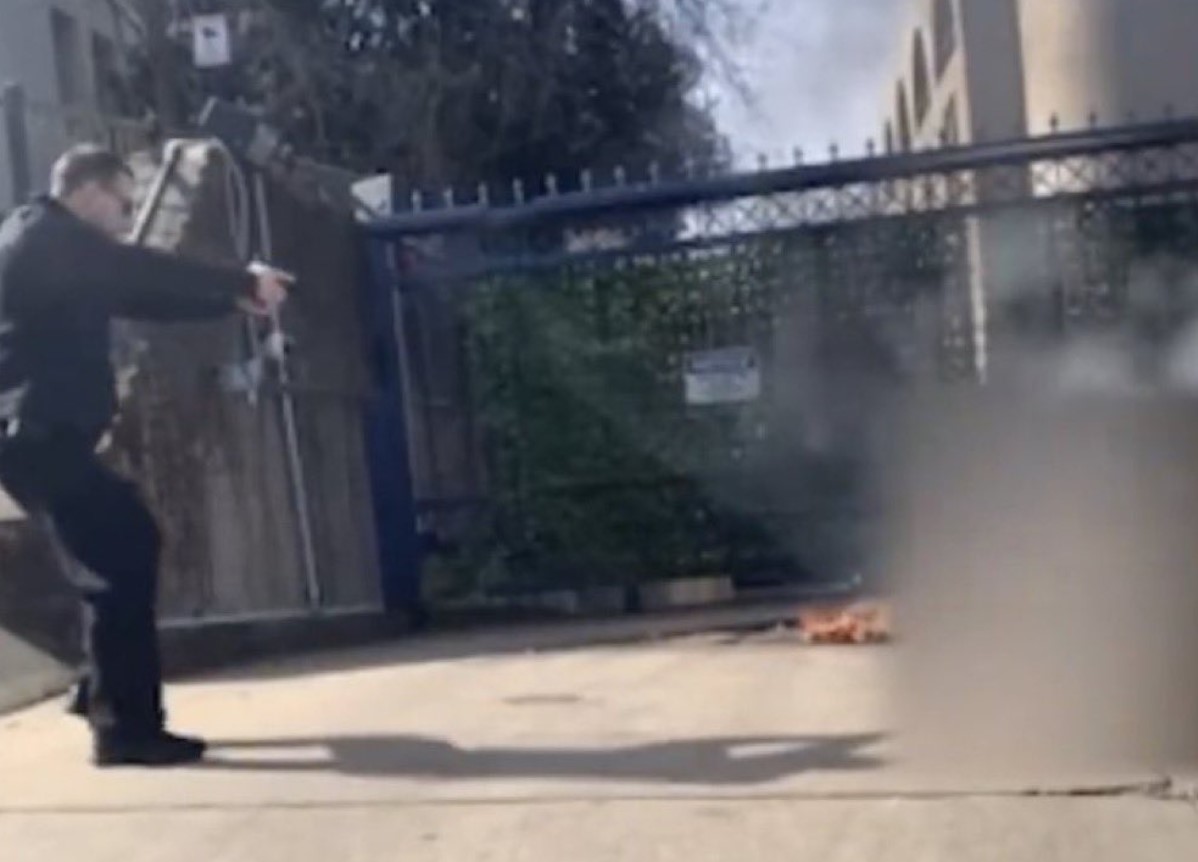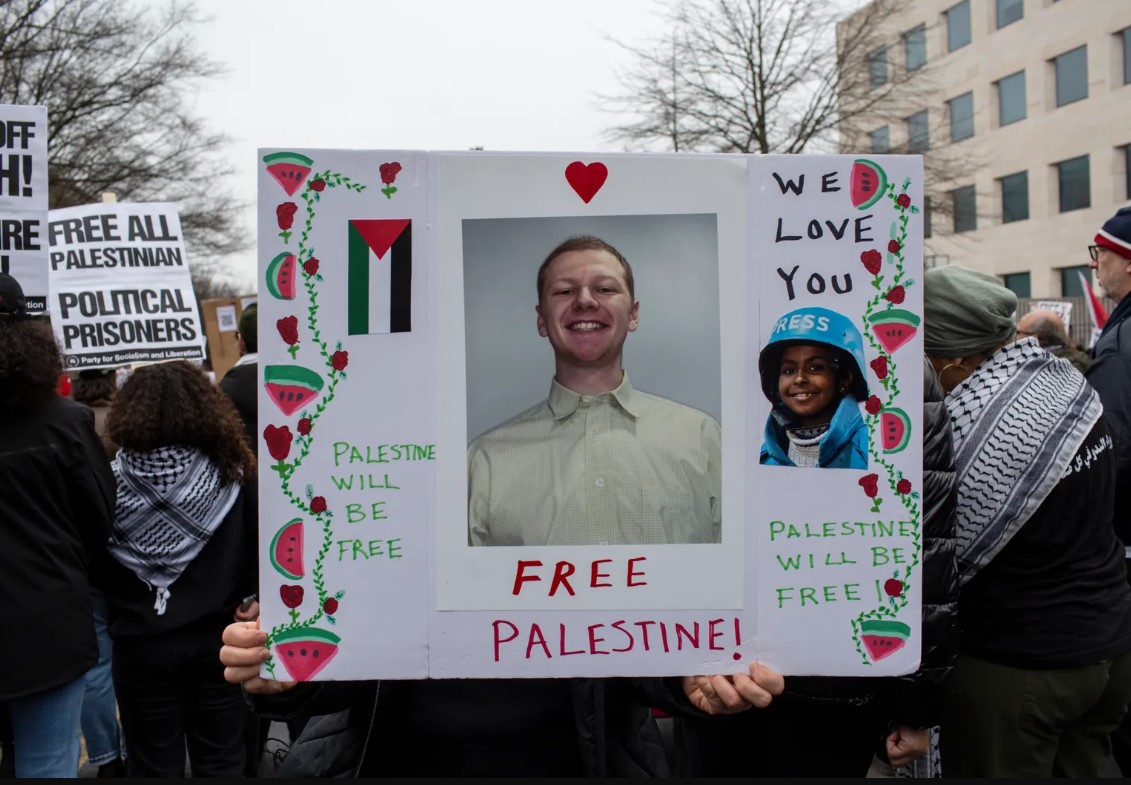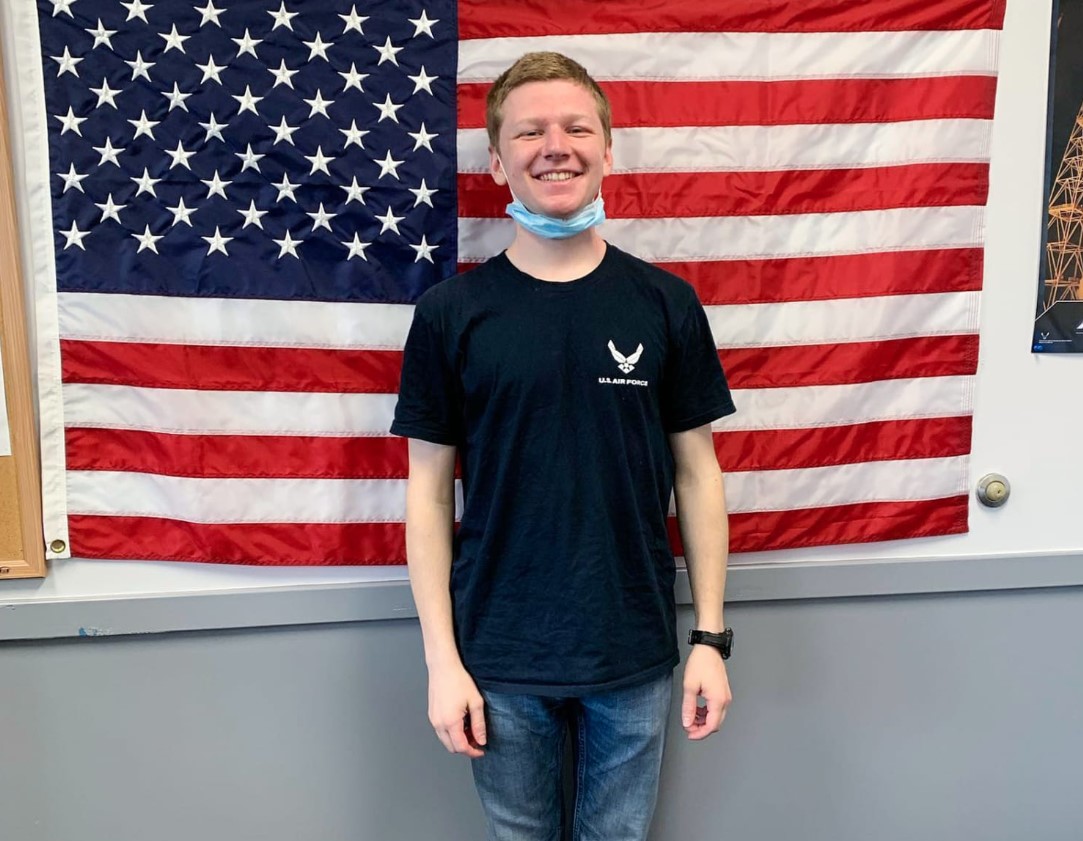Breaking: Aaron Bushnell's Protest At Israeli Embassy | Latest News
Can an act of self-immolation truly echo across the globe, igniting a firestorm of both condemnation and profound sorrow? On February 25, 2024, the world witnessed a harrowing act of protest as United States Air Force member Aaron Bushnell set himself ablaze outside the Israeli embassy in Washington, D.C., his final moments captured on video and shared across social media.
The event, which occurred near the Israeli embassy in the Northwest D.C. area, has sent shockwaves around the world, sparking intense debate and grief. Bushnell, a 25-year-old airman stationed in San Antonio, Texas, chose a form of protest that is as old as it is extreme. His actions, fueled by his opposition to the Israeli war against Palestine, have drawn both praise and criticism, forcing a reckoning on the complexities of political expression and the human cost of conflict.
| Attribute | Details |
|---|---|
| Full Name | Aaron Bushnell |
| Age at Death | 25 |
| Date of Birth | Reportedly 1999 |
| Place of Birth | Possibly in or around of Massachusetts, USA |
| Date of Death | February 25, 2024 |
| Location of Death | Washington, D.C., USA |
| Cause of Death | Self-immolation as an act of protest |
| Military Service | U.S. Air Force |
| Base of Service | San Antonio, Texas |
| Protest Target | Israeli actions in the Gaza conflict |
| Final Words | "I will no longer be complicit in genocide" and "Free Palestine!" |
| Video Availability | Yes, widely circulated on social media |
| Additional Details | Bushnell's actions have been compared to acts of protest throughout history. |
| Reference Website | CNN Report |
Footage of the event, quickly circulated online, captured the moments leading up to and including Bushnell's self-immolation. The video, which has been widely shared across various social media platforms, shows Bushnell calmly approaching the Israeli embassy. Before setting himself ablaze, he can be heard declaring "I will no longer be complicit in genocide," and shouting "Free Palestine!" The raw and visceral nature of the act, coupled with his final words, immediately transformed the event into a potent symbol of protest.
- Morena Mitch Fans Ed A Deep Dive Into The Influential World Of Morenas Fandom
- Tony Campisi The Rise Of A Multifaceted Talent
The immediacy of the digital age allowed this act of protest to reach a global audience almost instantaneously. The graphic nature of the event, however, prompted significant debate regarding the ethical implications of sharing such content. Some platforms removed the video, while others allowed it to remain, acknowledging its historical and journalistic value. The decision of whether to view and share such content has become a deeply personal one, reflecting each individual's perspective on the tragedy and the issues at its core.
The aftermath of Bushnells act was swift and multifaceted. Emergency services were immediately dispatched to the scene. However, the severity of his injuries was such that he later succumbed to them at a local hospital. News of his death triggered a flurry of reactions, ranging from expressions of sympathy and solidarity to strong condemnations of his actions and the message they conveyed.
Social media has become the central battleground for the ensuing discussion. Across various platforms, users shared their views, analyzed the incident, and debated its ramifications. The image of Bushnell, engulfed in flames, was quickly juxtaposed with historical images of self-immolation as a form of protest, notably the images of Buddhist monks protesting the Vietnam War. This comparison highlighted the historical context of such acts, and how they can be seen as a last resort to communicate a desperate plea for attention to injustice.
- Exploring The Allure Of Sondra Blust An Insight Into Her Onlyfans Journey
- Unveiling Ashantis Net Worth A Comprehensive Guide
The circumstances surrounding Bushnells act also raised questions about security. Several social media users initially misidentified a person pointing a gun at Bushnell as an Israeli guard. However, the individual was later identified as a member of the United States Secret Service, who was present to ensure the safety of others and to assist emergency personnel. This episode underscores the role of misinformation and the complexities in verifying information in the aftermath of a highly charged event.
The act has inevitably been seen through the prism of the ongoing Israeli-Palestinian conflict, the war in Gaza, and the larger issue of human rights. The video itself makes Bushnell's motivation clear: his objection to Israeli actions. Bushnell's final words, "Free Palestine," directly link his self-immolation to his stance against the conflict. His act has brought attention to the humanitarian situation and the impact of the conflict on civilians, particularly in Gaza, and also highlights the emotional and moral toll that conflict can have on individuals worldwide.
Media outlets, too, have been grappling with how to report on the event. CNN's Gabe Cohen reported on the unfolding tragedy, providing factual details and offering context. The reporting, along with that of other news organizations, aimed to balance the need to report the facts of the tragedy with the sensitivity required when covering such a sensitive event.
The removal of the video from some platforms reflects the complex considerations surrounding the content moderation policies. The removal reflects a struggle to balance the need to disseminate information with the desire to protect users from potentially distressing content. This incident underscores the constant debate concerning freedom of speech, the role of social media, and its power to amplify messages and images, even those as disturbing as this.
The impact of Bushnell's act extends beyond the immediate emotional reactions and the political debate. The event is now part of the historical record. It serves as a potent reminder of the human capacity for both compassion and protest, and a testament to the lengths some individuals are willing to go to make their voices heard on the global stage. The archives of history will remember Aaron Bushnell and his tragic act as an extreme expression of dissent, adding yet another layer of complexity to the discussion regarding the Israeli-Palestinian conflict.
As the world continues to process the events of that day in Washington D.C., the focus remains on the core questions that the act inevitably raises. How far is too far when it comes to political expression? What responsibility do we have to bear witness to suffering? And what is the best way to respond to the complexities of international conflicts? Bushnells act may become an enduring symbol of these questions, continuing to prompt debate and serve as a mirror to the world's conscience.
In the days and weeks ahead, Aaron Bushnell's act will be remembered, analyzed, and dissected. His legacy, etched in the flames of his final act, is sure to be a complex one, touching upon issues of war, peace, activism, and the profound impact of one individual's beliefs in a world seemingly on fire.



Detail Author:
- Name : Prof. Winston Klocko
- Username : dicki.barry
- Email : yost.isadore@runte.net
- Birthdate : 2000-09-01
- Address : 1901 Wilkinson Harbors Suite 237 South Austynshire, NY 84023
- Phone : 1-614-687-6106
- Company : Hartmann-Torphy
- Job : Extruding Machine Operator
- Bio : Dolores cumque aperiam consequatur quisquam molestiae. Enim molestiae nisi eius expedita.
Socials
instagram:
- url : https://instagram.com/esmeralda_official
- username : esmeralda_official
- bio : Vitae eius nihil repellat aut. Qui ipsa ut quia temporibus.
- followers : 5213
- following : 1085
tiktok:
- url : https://tiktok.com/@esmeralda9547
- username : esmeralda9547
- bio : Consequatur laborum quaerat optio laboriosam et enim. Eaque deleniti esse ex.
- followers : 3899
- following : 571
facebook:
- url : https://facebook.com/esmeralda_real
- username : esmeralda_real
- bio : Asperiores earum voluptatem assumenda accusantium ut.
- followers : 4880
- following : 2351